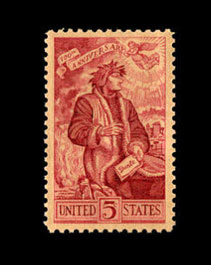
The tercet is a three-line stanza, often rhyming, that constitutes the core of a variety of poetic expressions, including terza rima, sonnets, odes, cantos, and villanelles.
The tercet gives poets plenty of fuel to write poems of varying lengths in three-line measures. From its genesis in medieval Italy, the tercet has also evolved to become an integral component of blank verse and free verse. Embedding the tercet into a longer work serves to add a simple but masterful musicality.

While credit for the tercet is the subject of debate, Dante was the progenitor of its first cousin, terza rima.
| Rhyme: | Varied, but usually aba, moving to further stanzas – aba-bcb-cdc, etc. |
| Structure: | Three-line stanzas |
| Measure/Beat: | Iambic tetrameter or iambic pentameter |
| Common Themes: | Love, journey, loss, life issues |
| Other Notes: |
|
